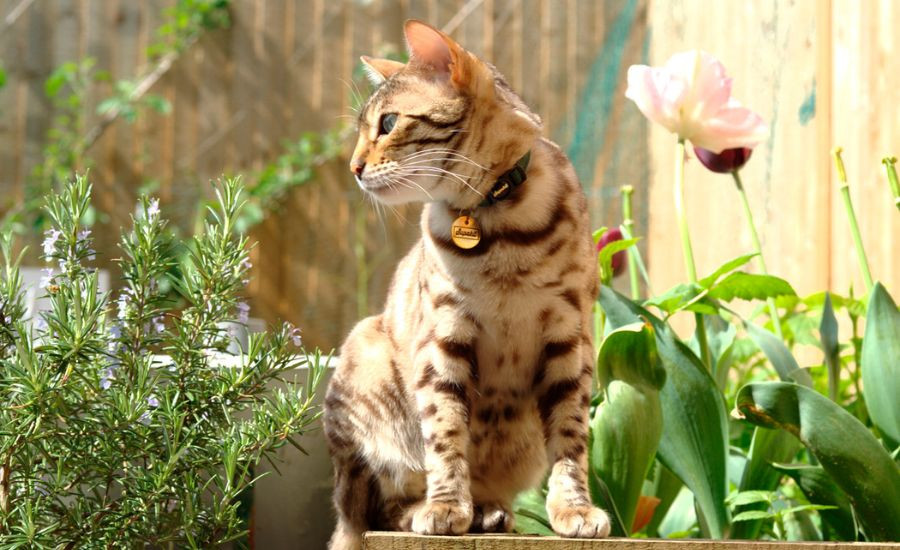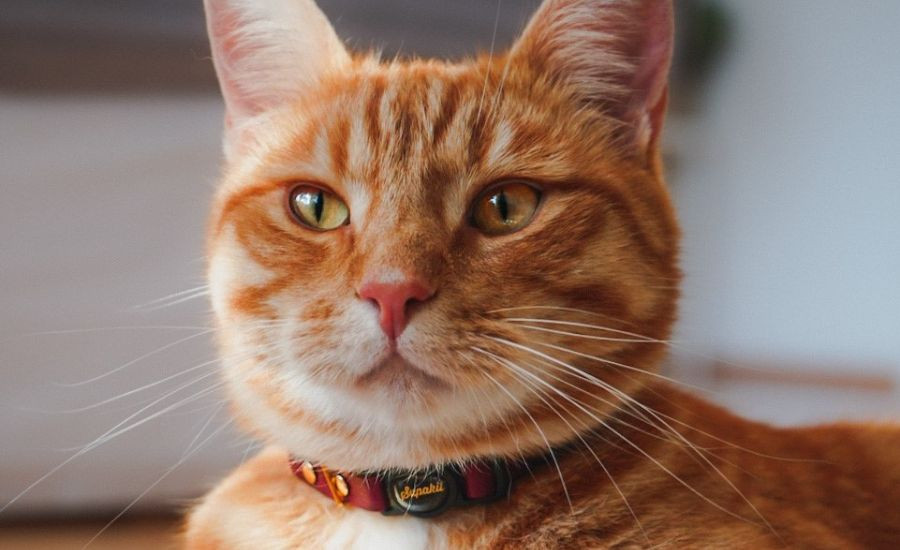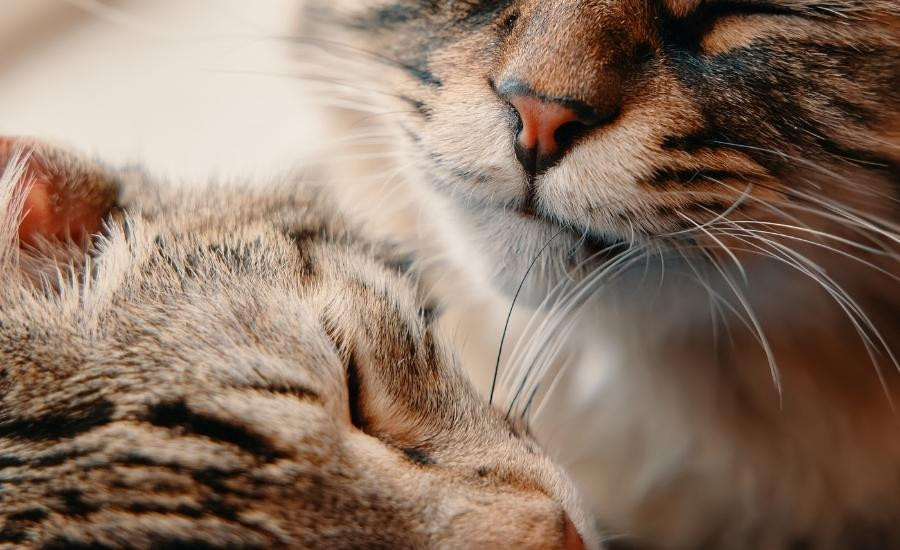Bringing a new cat into your home marks the start of an exciting chapter. As you prepare to welcome your feline friend, numerous questions might arise, and one of the most common dilemmas is choosing between a male or female cat. Understanding the nuances between male and female cats can significantly aid in selecting the perfect pet to complement your lifestyle and household. Let’s delve into the frequently asked questions and shed light on whether a male or female cat would be the ideal addition to your family.
Neutered or Spayed Cats: The Foundation for Great Pets
Before we explore the differences, it’s crucial to clarify a few key terms. Throughout this discussion, we’ll focus on cats that have undergone neutering or spaying – a surgical procedure technically known as a gonadectomy. Cats that haven’t had this operation are termed ‘intact,’ and their behaviors can differ significantly due to the presence of reproductive hormones.
Neutered male cats have had their testicles surgically removed. This procedure leads to a noticeable decrease in aggressive tendencies, reduces urine marking, and diminishes various sexual behaviors (1). Unlike female cats, intact male cats do not experience heat cycles. However, if left unneutered, they will constantly seek out mating opportunities, which can lead to unwanted behaviors and territorial disputes.
Spayed female cats, having had their ovaries and uterus removed, exhibit reduced aggression and stress levels compared to their unspayed counterparts (2). Spaying eliminates heat cycles, meaning they won’t engage in loud yowling to attract male cats to your home, a behavior often associated with females in heat.
Cats that have undergone gonadectomy procedures generally display increased affection towards humans (3). Furthermore, they are less susceptible to certain health issues. Consequently, both neutered male and spayed female cats generally make better domestic pets than intact cats of either sex, offering a more harmonious and loving companionship.
Affection: Does Gender Play a Role?
 Emerald leather cat collar by Supakit
Emerald leather cat collar by Supakit
Popular belief and anecdotal accounts (4) often suggest that male cats are inherently more affectionate and friendly compared to female cats. However, when we consider the natural behaviors of felines, a slightly different picture emerges, suggesting females may be equally, if not more, inclined towards affection.
While male cats in the wild typically lead solitary lives, patrolling their territories independently, female cats possess strong and enduring maternal instincts. They naturally tend to live in groups, especially when resources are abundant (5). In these colonies, female cats collectively care for kittens and are known to exhibit comforting behaviors, such as staying close to their human companions when they are unwell (6).
To investigate personality traits more scientifically, research has been conducted comparing character traits between male and female cats. A study examining 196 cats looked at factors like friendliness, sociability, and independence. The findings indicated that the sex of a cat was not a primary determinant of its personality (7).
The crucial factor in determining a cat’s affectionate nature is early handling and socialization. Kittens that are not handled and positively socialized with humans daily between the critical period of 2 to 7 weeks of age are less likely to develop into friendly and affectionate companions (8). This holds true regardless of their genetic predisposition. Friendliness is indeed a heritable trait in cats (9), meaning kittens from friendly parents are more likely to be friendly themselves.
Therefore, if your primary desire is an affectionate cat, the choice between male or female is less critical than you might think. What truly matters is the quality of their early socialization experiences with humans during the first two months of their life, and the inherent friendliness of their parental lineage.
Breed also significantly influences a cat’s propensity for affection. Certain breeds, such as Ragdolls and Persians, have been selectively bred for their gentle and friendly temperaments, making them naturally more inclined to be affectionate companions.
Aggression: Are Female Cats More Prone to It?
 are female cats more aggressive than male
are female cats more aggressive than male
Aggressive behavior is understandably undesirable in a pet cat. There’s a common misconception that female cats are inherently more aggressive than male cats, which could deter some from considering them as family pets. However, a study focusing on the behavior of 120 domestic cats found no significant difference in aggressive behavior between male and female cats (10).
This same study highlighted that variations in behavior were more attributable to the individual temperaments of the cats studied. This suggests that a cat’s personality is a more influential factor than its sex when it comes to aggressive tendencies.
The perception of females being more aggressive might stem from observations of unspayed female cats. Female cats in heat or those protecting their kittens naturally exhibit heightened defensiveness and are more likely to react aggressively towards potential threats. Conversely, unneutered male cats are also more prone to aggression, particularly towards other cats as they compete for territory and mates. Ensuring your cat’s safety while they explore outdoors is paramount, regardless of gender. A breakaway cat collar is an excellent safety measure, allowing them to explore their curiosity without the risk of entanglement.
Therefore, provided your cat is spayed, their likelihood of being aggressive is not inherently increased by being female. Furthermore, the genetic background and breed of your cat play a significant role in their temperament and potential for aggression.
Negative early experiences or a lack of positive interactions with humans and other cats can certainly contribute to a cat becoming more fearful and potentially aggressive. Additional factors that can increase aggression include early weaning (11) and the use of punishment-based training methods by owners, which can induce fear and anxiety.
Size Matters: Are Male Cats Always Bigger?
 cat wearing supakit breakaway buckle leather collar
cat wearing supakit breakaway buckle leather collar
Generally, male cats do tend to be slightly larger than female cats, even when both are neutered early in life. Female cats typically reach their adult weight around 13 months of age, whereas male cats continue to grow until they are approximately 16 months old. During their growth phase, female cats require slightly less energy than male cats (12), which translates to needing less food.
However, it’s important to note that the size difference between adult male and female cats is not dramatically significant. Both sexes typically stand around 8 to 10 inches tall. Factors that have a much stronger influence on a cat’s size are their breed and the quality of nutrition they receive. Additionally, kittens weaned too early or those who experienced nutritional deficiencies during their early development may experience stunted growth, regardless of their sex.
One noticeable physical difference is that male cats often have larger faces compared to females. Testosterone, a hormone more prevalent in males, contributes to the rounding of the face, resulting in the characteristic ‘tom-cat’ appearance with puffy cheeks and a broader head. Male cats neutered later in life may retain this more pronounced, larger-headed appearance.
Coat Color: Female Cats and the Colorful Advantage?
 male or female cat
male or female cat
Female cats often exhibit a wider array of interesting and complex coat colors compared to male cats. This intriguing difference is rooted in feline genetics and the way color is determined by chromosomes. The orange color gene in cats is located on the “X” chromosome. Female animals have an “XX” chromosome configuration, while males have “XY”. Having two “X” chromosomes allows female cats to express more diverse color combinations involving orange.
Tortoiseshell cats are a prime example, displaying a unique patchwork pattern of two colors, most commonly orange and black, resembling the shell of a tortoise. Calico cats are a popular variation of tortoiseshell, featuring white patches in addition to the orange and black, creating a tricolored coat.
The genetic makeup required to produce a tortoiseshell or calico coat necessitates the presence of two “X” chromosomes. Consequently, almost all tortoiseshell and calico cats are female. However, nature occasionally surprises us with rare exceptions. A male cat with a rare triple-chromosome condition known as Klinefelter syndrome (XXY) can also be a calico, though this is exceptionally uncommon.
 Cat wearing supakit breakaway buckle leather collar
Cat wearing supakit breakaway buckle leather collar
Regular male cats can certainly be orange, as they do carry one “X” chromosome. However, they typically don’t express the complex patterns of orange combined with other colors seen in tortoiseshell and calico cats. Orange male cats are usually solid orange tabbies, displaying the tabby stripe pattern throughout their orange coat.
Social Dynamics: Male vs Female Cats with Other Cats
 are male cats more friendly
are male cats more friendly
If you already have a cat at home, choosing a new feline companion that will integrate harmoniously is a crucial consideration. Fortunately, both neutered and spayed cats are significantly more likely to coexist peacefully with other cats compared to intact adult cats.
Generally, female cats tend to be more receptive to welcoming new cats into their established territory. They are often more accepting of another female cat than a male cat. In feral settings, female domestic cats will form colonies if food resources are sufficient to sustain them. These colonies consist of related females who live cooperatively, sharing resources and even participating in raising kittens collectively (5).
Male cats, in contrast, do not typically form male-dominated social groups in the wild. They tend to roam their territories in solitude. Occasionally, a male cat may be tolerated by one or more female colonies within his territory and may visit them periodically. However, they generally do not engage in positive social interactions with other intact males, especially outside of mating contexts.
Therefore, if you currently have a cat, regardless of its sex, you are statistically more likely to have a smoother introduction process with a new female cat. However, it’s essential to remember that compatibility is not guaranteed, and individual personalities play a significant role.
Neutered male cats, particularly those neutered early in life, often exhibit social behaviors more akin to female cats than to intact male toms. This makes it entirely possible for a neutered male and a spayed female cat to live together peacefully, and even form a close bond.
For both sexes, the likelihood of cats developing a positive relationship significantly increases if they are raised together from a very young age. Early cohabitation is often a more critical factor than the sex of the cats involved. The ideal scenario for ensuring feline harmony is often adopting littermates. However, pairing unrelated young kittens can also be very successful, leading to a well-bonded social duo.
If adopting bonded cats or littermates isn’t feasible, inquire about a cat’s past living situation. A history of positive socialization with other cats is a strong indicator that a cat will likely adapt well to living with another feline companion.
Genetics also plays a role in a cat’s inherent sociability towards other cats. These factors – early socialization, past experiences, and genetics – can often outweigh the influence of sex when it comes to predicting a cat’s social compatibility with other felines.
Male vs Female Cats: Pros and Cons – A Quick Glance
 are all calico cats female
are all calico cats female
Female cats are statistically more likely to be smaller in size and are far more likely to possess tortoiseshell, calico, or torbie coat colors compared to male cats. They also generally exhibit a greater propensity for socializing well with other cats. Anecdotal evidence sometimes suggests female cats might be perceived as less affectionate or more prone to aggression, but these stereotypes are not consistently supported by scientific evidence. In reality, individual cat personalities exhibit a wide spectrum of variation, regardless of sex.
Male cats are more frequently seen with tabby coats and are extremely unlikely to display the chromosomal makeup necessary for tortoiseshell or calico coats. They may be less inclined to readily accept other cats into their household as adults. Male cats tend to be larger, consume more food, and continue growing for a longer duration. Many owners anecdotally report male cats as being more affectionate and less aggressive, although, again, scientific evidence doesn’t definitively confirm this as a universal trait.
Crucially, the available evidence indicates that sex is not a primary determining factor in overall personality type. Both male and female cats that have undergone gonadectomy procedures can develop into excellent pets and often behave remarkably similarly to one another. When choosing your new cat, the most significant factors shaping an ideal pet personality are:
- Avoiding early weaning.
- Experiencing positive human handling before 7 weeks of age.
- Living with other cats during the first few months to develop social skills.
- Breed-specific temperament and general breed characteristics.
- Being raised in a gentle and loving home environment.
Ultimately, whether you choose a male or female cat, focusing on these key developmental and environmental factors will contribute far more to a happy and well-adjusted feline companion than simply selecting based on sex alone.
References
(1) Neilson JC, Marks SL, Cline JL, et al. Effects of castration on problem behaviors in male cats. J Am Vet Med Assoc. 1997;211(5):593-596.
(2) Porters N, De Meester R, Moons CP, et al. Effect of ovariohysterectomy on feline behaviour. Vet Rec. 2017;180(12):302.
(3) Fatjo J, Ruiz-de-la-Torre JL, Manteca X. The effect of neutering on cat behaviour: a systematic review and meta-analysis. Appl Anim Behav Sci. 2006;100(3-4):177-187.
(4) Bennett, D., & Rutter, J. (2011). Cat breeds: a photographer’s celebration. London: Aurum Press.
(5) Macdonald, D. W., Yamaguchi, N., & Kerby, G. (2000). Group-living in the domestic cat: its socioecology and epidemiology. In D. C. Turner & P. P. G. Bateson (Eds.), The domestic cat: the biology of its behaviour (pp. 95-118). Cambridge: Cambridge University Press.
(6) Rochlitz, I. (2005). The welfare of cats in a domestic environment. In I. Rochlitz (Ed.), The welfare of animals: the lives of cats (pp. 1-34). Dordrecht: Springer.
(7) Rehnberg J, Keeling LJ. Personality in cats – current status and future directions. J Vet Behav Clin Appl Res. 2018;25:3-12.
(8) Karsh EB, Turner DC. The human-cat relationship. In DC Turner, PPGB Bateson (eds) The domestic cat: the biology of its behaviour. Cambridge University Press, Cambridge, 2000; 159–177.
(9) Lyons LA, Price AE, Hendy E, et al. Genetic variation in domestic cats: a systems approach to understanding feline behavior. J Hered. 2016;107(2):103-112.
(10) Overall KL, Dyer D, Mills DS. Sex differences in feline aggression and assertiveness. Appl Anim Behav Sci. 2005;95(1-2):1-14.
(11) McCune S. The impact of early experiences on the development of cat behaviour. In: Turner DC, Bateson P, editors. The domestic cat: the biology of its behaviour. 2nd ed. Cambridge: Cambridge University Press; 2000. pp. 149–158.
(12) National Research Council (US) Subcommittee on Cat Nutrition. Nutrient requirements of cats. Washington (DC): National Academies Press (US); 2006.

